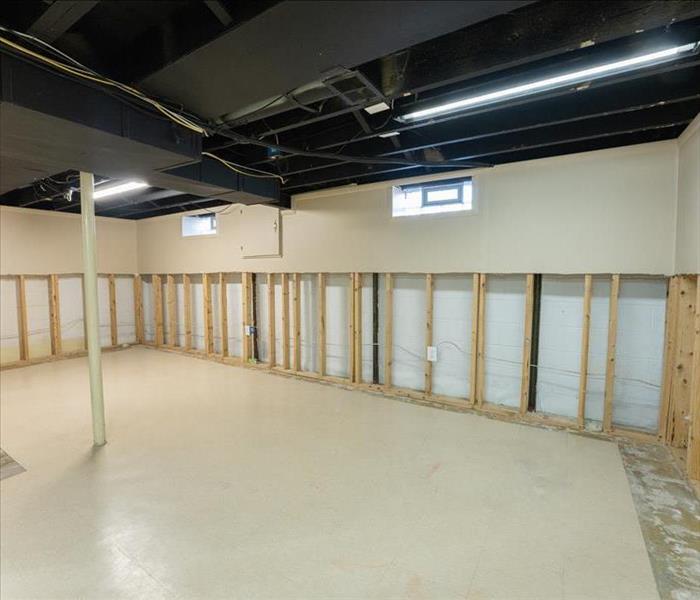What You Should Know About Cleaning and Repairing Drywall
7/20/2022 (Permalink)
Water damage in your home is a problem that needs to be handled as quickly as possible. Water from flooding due to rising groundwater, sewage backup, and weather events is considered to be black water and as such contains contamination, requiring the intervention of a professional damage restoration company. Untreated damage can lead to the growth and spread of mold. If you ever suffer damage from floods at your home in Black Forest, CO, drying your interiors is a big part of remediation, including drywall repair and cleanup.
Drywall Repair and Cleanup
Removing Drywall After Flooding
Water-soaked drywall cannot be dried and reused, so it must be removed. Water wicks upward in drywall, so it’s generally recommended to tear out a portion of the wall as part of the remediation plan. This is known as a flood cut and it should be at least 12 inches above the flood line. The removal process includes these steps:
- Mark a straight line for the flood cut: Use a chalk line to determine the limit of drywall removal. It should be at least one foot from the flood line.
- Cut along the line with a utility knife: Using a knife, score through the drywall along the length of the flood cut. Do not cut fully through the drywall. Cut ½ to ¾ of the way through.
- Loosen and remove drywall: Using a hammer, make a small hole in the part of the drywall to be removed. Gently separate the drywall from the studs, using the hole as a handle.
- Tear out wet insulation: After removing the drywall, remove any wet insulation. Because insulation can be damper than it feels, it may be worth taking out all of it.
- Use fans to dry out behind the walls: Let your fans run for several hours to improve the airflow behind the wall and facilitate moisture removal.
Taking the Appropriate Measures
Water damage from flooding can also lead to electrical problems. Shut off electricity to affected rooms prior to removing drywall and insulation. The last thing you want to do is create an electrical hazard or cause additional damage that requires extra repair and cleanup. Professional water cleanup providers know how to safely remove drywall and other damaged items throughout your home. If you have to file a claim, your insurance company will prefer working with professionals to restore the damaged areas to preloss conditions.
Understanding the Value of a Full Remediation
Major water damage can also compromise other parts of your home, including floors, ceilings, and other structural elements. The professionals don’t just remove soaked items. They also repair and rebuild your home as necessary, minimizing the cost and time it takes to restore your property. The pros also know how to check for mold and prevent the spread of it to other parts of the house.
While you never want to experience flooding in your home in Black Forest, CO, it’s important to reach out to the pros should it occur. The faster you can remove and dry soaked drywall and other items, the better. Partial removal of the drywall may be all you need to do, but it should be at least 12 inches above the flood levels in your home.


 24/7 Emergency Service
24/7 Emergency Service
